Key Highlights
- Government AI urgency reaches critical mass as 42% of public sector agencies deploy more than ten AI agents—the highest rate across all industries—with productivity doubling in many functions and adoption pace accelerating from years to days.
- Google Public Sector’s $85+ billion infrastructure investment creates operational capacity across 42 regions, 124 zones, and 202 edge locations, contrasting competitors’ future promises with present availability while offering Gemini for Government at less than 50 cents per agency.
- Zero trust architecture and air-gapped deployments provide security foundations essential for classified national security work, with partnerships like Lockheed Martin integration bringing AI to defense environments and Nvidia collaboration enabling sovereign on-premises deployments.
- Implementation challenges span technical, organizational, and strategic domains, including legacy system integration complexity, workforce reskilling requirements, governance framework development, and balancing efficiency gains against democratic accountability concerns.
- Future trajectory through 2030 depends on current decisions about investment priorities, talent development, risk tolerance, and governance frameworks, with government positioning itself either as AI innovation leader or follower based on actions taken now.
The pace of artificial intelligence transformation in government has shifted from years to days. Google Public Sector CEO Karen Dahut articulated the urgency bluntly: “We’re talking days, not months or years, and there is a heightened sense of global urgency”. The digital domain has become the new strategic high ground for national security, replacing air and space as the critical battleground where nations compete and defend their interests. This fundamental shift demands that government agencies accomplish more with constrained budgets in mission-critical environments that evolve constantly. In this high-stakes landscape, Google Public Sector has positioned itself as essential infrastructure for AI-powered governance, launching comprehensive platforms designed to embed intelligent agents into every government workflow.
The Urgency Behind Government AI Adoption
The transformation underway in public sector operations represents an unprecedented acceleration. Federal agencies surveyed report that productivity has doubled or exceeded previous levels due to generative AI implementation, with 42% already deploying more than ten AI agents—the highest deployment rate across all industries surveyed. Looking ahead, increased AI agent deployment ranks as the top objective for public sector organizations, surpassing priorities in commercial sectors.
This urgency extends beyond operational efficiency. The digital domain now functions as strategic territory where nation-states establish competitive advantage and defend critical assets. Traditional perimeters defined by physical boundaries have given way to dynamic digital environments where threats emerge continuously and defense requires constant vigilance. In this context, AI agents become force multipliers, enabling governments to monitor threats, analyze intelligence, process massive datasets, and respond to challenges with speed impossible through human-only operations.
Recent geopolitical developments amplify these imperatives. The ongoing government shutdown and budgetary constraints create profound uncertainty affecting federal agencies and contractors, imposing tension between mission criticality and resource limitations. Technology partners capable of delivering secure, cost-effective AI infrastructure during institutional disruptions become invaluable. Google Public Sector’s less-than-50-cents-per-agency pricing for Gemini for Government reflects this reality, undercutting competing platforms while providing comprehensive AI capabilities.
Google Public Sector: Architecting the AI-Powered Government
Google Public Sector emerged in 2022 as an independent entity leveraging Google Cloud technology, purpose-built to meet government requirements. Unlike generic cloud offerings, this structure provides isolated instances with last-mile customization for specific agency needs, security clearances, and compliance mandates.
The foundation rests on zero trust architecture and integration with Mandiant, Google’s cybersecurity operations unit acquired specifically to strengthen government security posture. Zero trust principles—never trust, always verify—eliminate implicit trust assumptions and require continuous authentication regardless of network location. This approach addresses the fundamental vulnerability of traditional perimeter-based security models that assume entities inside the network are trustworthy. For government agencies managing classified information, sensitive citizen data, and critical infrastructure, zero trust architecture provides essential defense against sophisticated adversaries.
The infrastructure investment backing this platform demonstrates Google’s commitment. The company raised its 2025 capital expenditure forecast to $85 billion, with increases driven by “strong and growing demand” for cloud and AI services. By October 2025, Google further increased projections to $91-93 billion for the year and announced “significant increases” planned for 2026. Approximately 60% of capital spending targets servers, with the remainder allocated to data centers and networking equipment. This investment creates operational infrastructure available today, contrasting with competitors offering future promises.
The existing footprint spans 42 regions, 124 zones, and 202 edge locations globally. This planet-scale infrastructure enables government agencies to deploy AI workloads close to where data resides and decisions execute, reducing latency and improving responsiveness. For national security applications, geographic distribution provides redundancy and resilience against localized disruptions.
Strategic partnerships extend Google Public Sector’s reach into mission-critical domains. The collaboration with Lockheed Martin integrates Google’s Gemini models into the Lockheed Martin AI Factory, deploying generative AI within secure, on-premises, and air-gapped environments. This phased deployment begins with unclassified systems before progressing to classified applications across aerospace, space exploration, and cybersecurity.
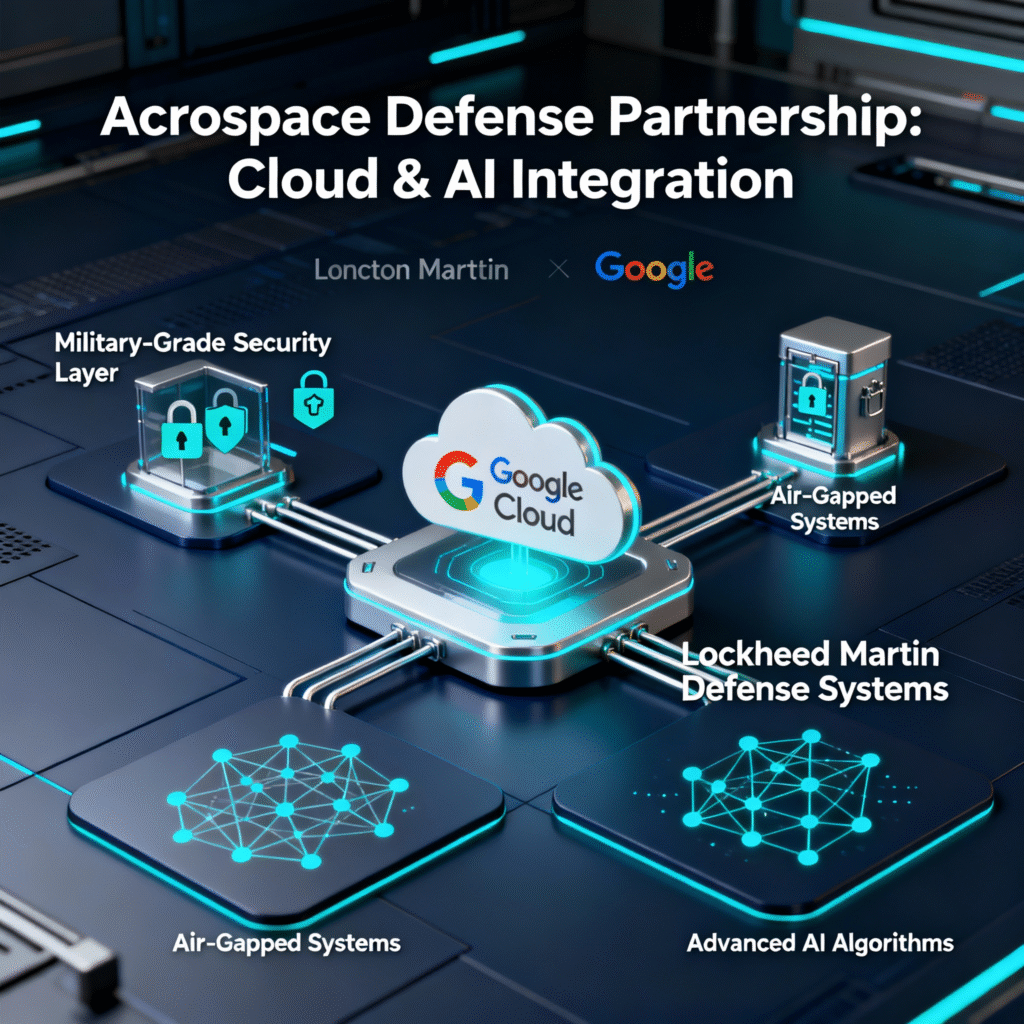
The partnership enables accelerated multi-modal data analysis, advanced research and development, and optimized logistics including supply chain management and route planning. Lockheed Martin personnel across the enterprise gain access to powerful AI tools while maintaining the highest security and mission assurance standards essential for national defense. Similarly, integration with Nvidia brings Gemini models running on Nvidia Blackwell GPUs to government data centers, enabling sovereign, air-gapped AI for mission-critical workloads.
Gemini for Government: The Technical Architecture Powering Transformation
Announced in August 2025 through a General Services Administration OneGov agreement, Gemini for Government provides federal agencies with a comprehensive AI platform at unprecedented value pricing. The offering combines Google’s enterprise search capabilities, video and image generation tools, NotebookLM research assistant, and pre-packaged AI agents for deep research and ideation. gsa
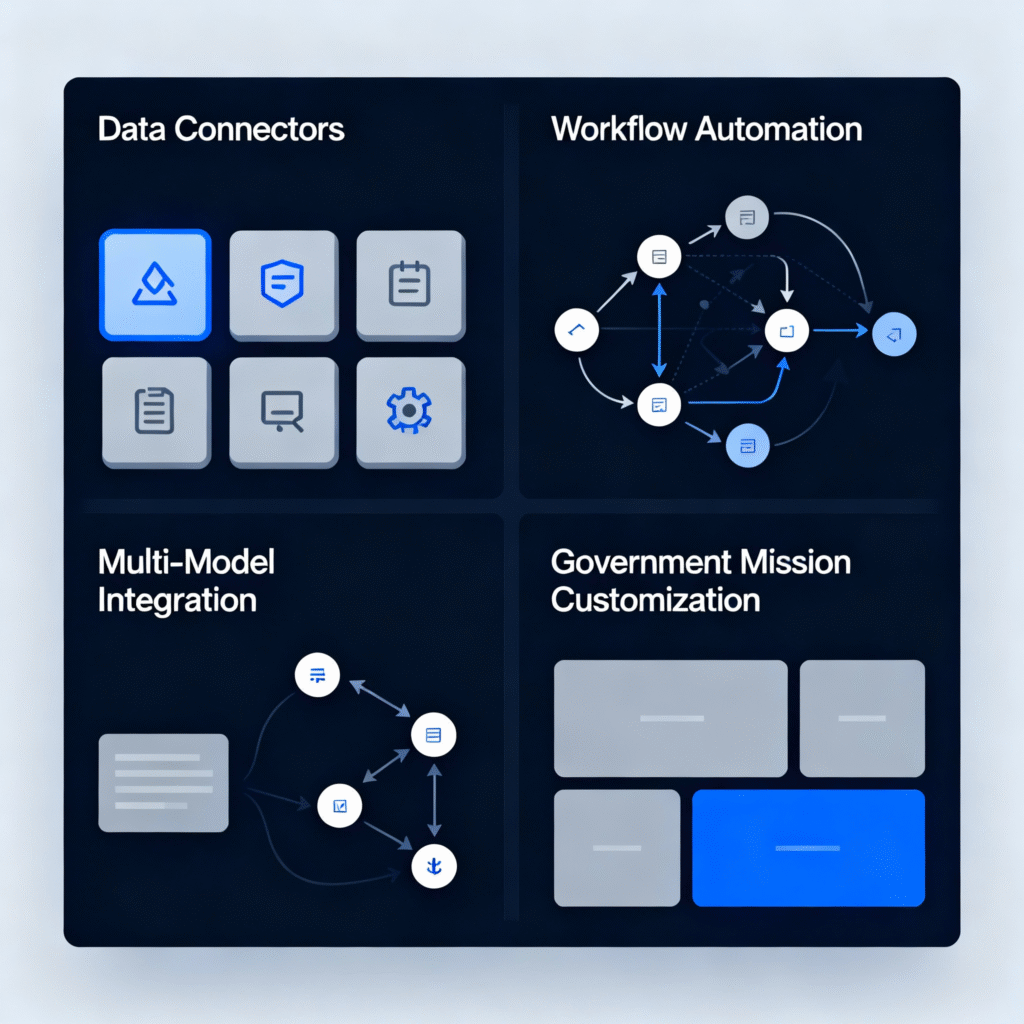
The architecture centers on an AI agent orchestration platform with several distinguishing capabilities. The AI Agent Gallery provides connectors to multiple enterprise data sources, agent-to-agent communication protocols, and an open ecosystem enabling agencies to select Google-built agents, third-party solutions, or custom government-developed agents. This flexibility grants agencies control over AI adoption, allowing close management of agency-wide agent deployment through user access controls, AI agent provisioning, and multi-agent coordination.
Multi-model flexibility represents another core advantage. Agencies access Google’s Gemini models alongside the ability to tune and ground their own models through Google Cloud’s Vertex AI platform. This approach accommodates diverse use cases requiring different model characteristics—some missions need conversational interfaces, others demand specialized domain knowledge, and still others require models fine-tuned on agency-specific data.
Deployment options span the full spectrum of government security requirements. Standard operations run on public cloud infrastructure with FedRAMP High authorization and built-in security covering identity and access management, AI-driven threat protection, data privacy, and advanced compliance including SOC2 Type 2. For agencies requiring connected on-premises environments, Google Distributed Cloud (GDC) delivers the full Gemini stack within government data centers while maintaining connectivity to Google’s infrastructure for updates and model improvements.
The most sensitive missions demand fully air-gapped deployments disconnected from the public internet. Gemini on GDC air-gapped configuration enables agencies to develop and deploy agentic AI while keeping highly sensitive data within on-premises data centers with no external connectivity. Singapore public sector agencies including CSIT, GovTech Singapore, and HTX became the first in Asia to access this capability, accelerating AI development for national security, public safety, and policy modeling applications.
The security posture extends beyond infrastructure. Google’s approach emphasizes security “everywhere all the time,” shifting advantage back to cyber defenders through continuous monitoring, threat intelligence from Mandiant, and custom silicon providing hardware-level security controls. This comprehensive stance addresses the reality that government agencies face persistent, sophisticated threats from state-sponsored actors and cybercriminal organizations.
Government AI Use Cases: From Concept to Mission Impact
Federal agencies have moved rapidly from pilot projects to production deployments across mission-critical functions. The Department of Defense leads in AI agent adoption for intelligence analysis, decision support, and operational planning. The ability to process massive volumes of satellite imagery, communications intercepts, and sensor data enables faster threat identification and response.
The US Postal Service demonstrates legacy system modernization using Google’s Vertex AI, transforming decades-old infrastructure into intelligent, responsive operations. The National Cancer Institute applies AI to research process automation, accelerating scientific discovery through rapid literature analysis, hypothesis generation, and experimental design. Pacific Northwest National Laboratory leverages AI for complex scientific computing applications including climate modeling, materials science, and energy research.
Aviation and weather agencies including the FAA and NOAA deploy AI for operational efficiency and data processing, managing air traffic patterns, weather prediction models, and environmental monitoring at scales impossible through manual analysis. The Department of Energy utilizes AI across infrastructure management and mission support, optimizing power grid operations and securing critical energy facilities.
Beyond federal government, state and local adoption accelerates. The City of Los Angeles implemented Google Workspace with Gemini to prepare for major events, streamlining coordination across departments and improving citizen communication. Old Dominion University established an AI incubator partnership focused on research and workforce development, preparing the next generation for AI-enabled government service.
Critical Decision Points for Government Leaders
Agency executives, technology officers, security professionals, and procurement officials face complex decisions as they architect AI strategies. These choices determine whether AI adoption delivers transformational value or creates new vulnerabilities and dependencies.
Strategic questions for government leaders and policymakers center on balancing speed with security. The pressure to deploy AI rapidly conflicts with the need for thorough testing, risk assessment, and governance framework development. Research shows that while efficiency gains initially bolster trust in AI systems, they simultaneously reduce citizens’ perceived control—when structural risks become apparent, both institutional trust and perceived control drop sharply. This “failure-by-success” dynamic suggests that early functional gains can obscure long-term risks to democratic legitimacy.
Governance frameworks ensuring responsible AI use require addressing transparency, accountability, and fairness throughout the AI lifecycle. Studies identify 13 key challenges across technological, organizational, and environmental dimensions, including poor data quality, limited AI-ready infrastructure, weak governance, misalignment in human-AI decision-making, and sustainability concerns. Without proper frameworks, agencies risk deploying AI systems that produce biased outcomes, lack explainability, or fail under real-world conditions.
Managing vendor dependencies while ensuring national security presents ongoing tension. Reliance on commercial cloud providers creates concerns about data sovereignty, supply chain security, and the ability to maintain critical systems if relationships deteriorate. Building in-house AI capabilities provides greater control but requires substantial investment in talent, infrastructure, and ongoing maintenance.
Infrastructure choices for technology and CIO offices involve fundamental architecture decisions. Cloud deployments offer scalability, rapid updates, and access to cutting-edge models but introduce internet connectivity dependencies and potential attack surfaces. On-premises solutions maintain greater control and meet stringent security requirements but require significant capital investment and expertise to operate. Air-gapped systems provide maximum isolation for classified work but sacrifice easy integration with external data sources and model updates.
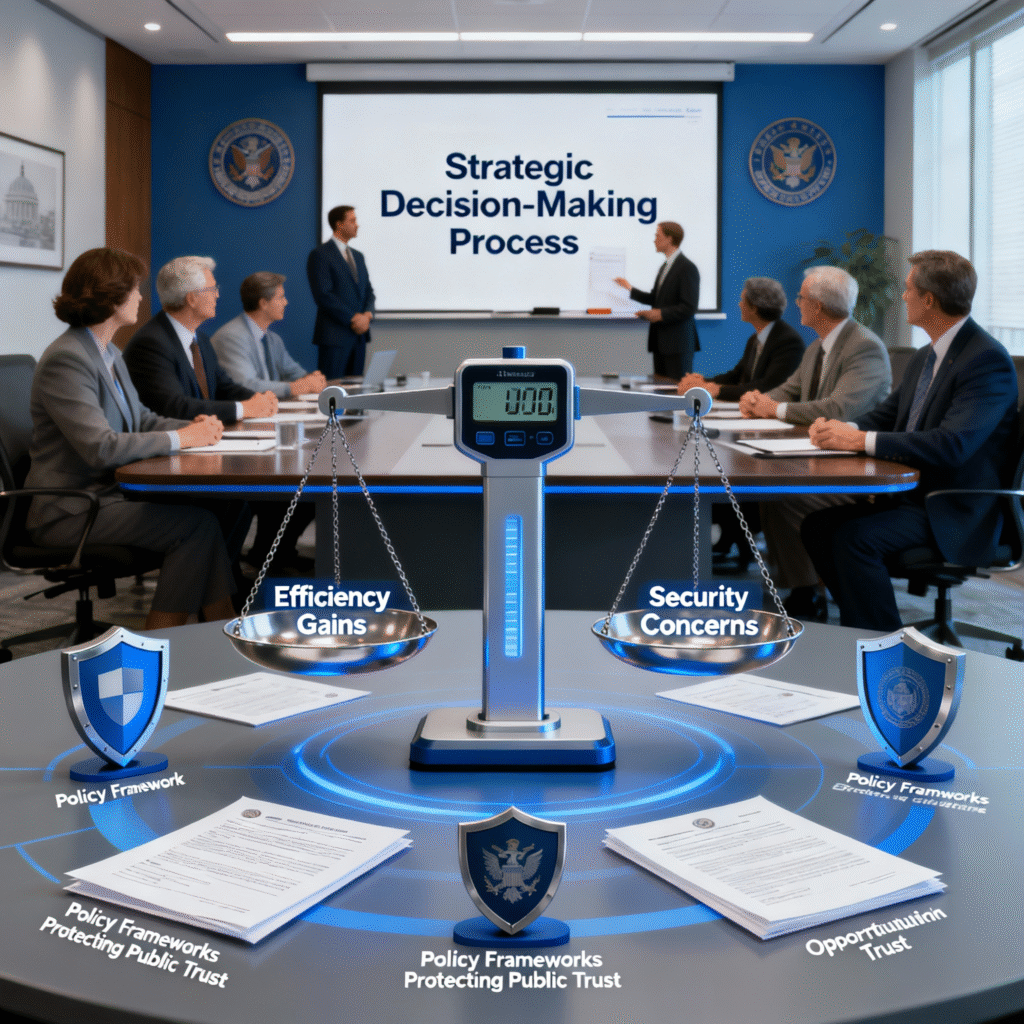
Integrating AI agents with legacy systems poses substantial technical challenges. Government IT environments typically include decades-old infrastructure built on obsolete technologies, with limited documentation and scarce expertise to modify them. Modern AI platforms require clean, structured data and standard APIs—capabilities most legacy systems lack. Middleware and integration layers can bridge these gaps but add complexity and potential failure points.
The choice between custom TPU architectures like Google’s versus GPU solutions from Nvidia involves performance and cost trade-offs. TPUs, designed specifically for AI workloads, deliver superior energy efficiency and cost-effectiveness for certain tasks. GPUs provide greater flexibility across workload types and benefit from extensive software ecosystem support. Mission requirements, existing infrastructure, and workforce capabilities should drive these decisions rather than vendor preferences.
Security and compliance officers confront zero trust implementation challenges in government environments. Moving from perimeter-based security models to continuous verification requires rethinking network architecture, identity management, and access controls. Legacy systems often lack the granular controls necessary for zero trust, and retrofitting them proves expensive and time-consuming. Cultural resistance from personnel accustomed to broad network access after initial authentication complicates deployment.
Data sovereignty and cross-border AI infrastructure concerns intensify as government data flows through global cloud networks. While Google Public Sector maintains isolated US-based infrastructure for federal work, questions persist about data residency, third-party access, and foreign intelligence risks. Audit trails and accountability in AI agent operations require robust logging, monitoring, and analysis capabilities that can track decisions to specific models, data inputs, and human oversight actions.
Procurement and contracting professionals must evaluate vendor readiness using evidence rather than promises. Existing infrastructure and operational track records provide more reliable indicators than roadmap commitments. Google Public Sector’s operational footprint of 42 regions and 124 zones contrasts with competitors still building capacity. Integration partner ecosystems matter—prime contractors like Lockheed Martin bring domain expertise and existing security clearances that smooth AI deployment into classified environments.
Lock-in risks and interoperability considerations demand attention. Proprietary platforms that prevent data portability or require extensive retooling to switch vendors create dependency that limits negotiating power and innovation. Open standards, multi-cloud strategies, and contract provisions enabling migration reduce these risks.
Opportunities, Risks, and Implementation Realities
Government AI adoption promises significant benefits alongside substantial risks. Productivity and efficiency gains manifest through automation of repetitive administrative tasks, faster decision-making via intelligent data analysis, and resource optimization in constrained budgets. Agencies report productivity doubling in some functions, freeing personnel for higher-value work requiring human judgment and creativity.
Mission enhancement extends to scientific research acceleration in areas like cancer treatment, energy systems, and climate modeling. National defense capabilities improve through faster intelligence analysis, predictive threat detection, and optimized logistics. Citizen service delivery benefits from AI-powered chatbots, personalized recommendations, and streamlined application processing.
The economic and innovation impact includes job creation in AI implementation and support roles, stimulation of the government contractor ecosystem to develop new capabilities, and establishment of global standards for AI-powered governance. Countries leading in government AI adoption gain competitive advantages in attracting talent, investment, and international partnerships.
However, technical risks require constant attention. Legacy system integration complexity can derail projects through incompatible architectures, data format mismatches, and insufficient APIs. AI model reliability in high-stakes decision environments remains imperfect—systems can produce confident but incorrect outputs, fail when encountering edge cases outside training distributions, and exhibit unpredictable behaviors as they scale. Scalability across diverse agency needs challenges even sophisticated platforms, as different missions demand unique security postures, latency requirements, and integration patterns.
Organizational challenges frequently prove more difficult than technical issues. Workforce reskilling and change management require comprehensive training programs, clear communication about AI’s role supporting rather than replacing workers, and patience as personnel adapt to new workflows. Resistance from traditional procurement processes built for static purchases rather than evolving technology slows adoption and pushes agencies toward established vendors over innovative startups. Coordination across federal, state, and local levels introduces fragmentation risk, duplicated efforts, and missed opportunities for shared infrastructure.
Strategic concerns include national security implications of AI infrastructure dependencies on commercial providers, ethical considerations in automated government services that affect citizens’ rights and opportunities, and transparency and explainability challenges when AI systems make consequential decisions. These concerns intensify in geopolitical contexts where US-China AI competition shapes investment priorities, allied nation collaboration requires technology sharing agreements, and supply chain security for AI hardware becomes critical.
Implementation Framework: From Assessment to Governance
Successful government AI adoption follows structured phases balancing ambition with pragmatic risk management.
Phase 1: Assessment and Planning establishes foundations. Agencies must prioritize mission-critical versus routine operations, mapping security clearance and compliance requirements to specific use cases. Infrastructure readiness evaluation examines network capacity, data quality, integration capabilities, and personnel skills. This assessment identifies quick wins that build momentum alongside longer-term transformational projects requiring multi-year commitments.
Phase 2: Pilot and Proof of Concept tests assumptions. Targeted use case selection with measurable outcomes provides evidence for scaling decisions. Hybrid deployment testing across cloud, on-premises, and air-gapped configurations reveals operational complexities before full production. Security validation and risk mitigation during pilots prevents discovering fundamental flaws after extensive deployment.
Phase 3: Scaling and Integration operationalizes AI. Workflow embedding across the employee base requires change management, training, and continuous support. Legacy system migration strategies balance modernization benefits against disruption risks, often favoring incremental approaches over wholesale replacement. Continuous monitoring and optimization respond to evolving threats, user feedback, and mission changes.
Phase 4: Governance and Evolution ensures long-term success. AI ethics boards and oversight mechanisms provide structured review of controversial use cases, monitor for unintended consequences, and update policies as technology advances. Regular security audits and compliance reviews maintain defensive posture against emerging threats. Innovation pipelines for emerging capabilities position agencies to adopt beneficial advances without constant disruption.
Future Trajectory: Government AI Through 2030
Technology evolution will bring increasingly sophisticated AI agents with autonomous decision-making capabilities, quantum computing integration for complex simulations, and refined human-AI collaboration models optimizing each’s strengths. These advances promise breakthroughs but also amplify risks if governance doesn’t keep pace.
Government transformation will shift from pilot projects to enterprise-wide deployment, with citizen expectations rising for AI-powered services matching commercial experiences. Whether government positions itself as AI innovation leader or follower depends on current decisions about investment, talent development, and risk tolerance. India’s ambitious AI action plans targeting economic transformation and global leadership demonstrate the competitive dynamics at play.
Market maturation will drive consolidation among public sector AI vendors as standards emerge and certification requirements favor established players. Small innovators may find opportunities through government-specific niches or partnerships with prime contractors rather than direct sales to agencies. The balance between tech giants and specialized vendors will shape innovation velocity and competitive dynamics.
Navigating the Transition: Actionable Guidance
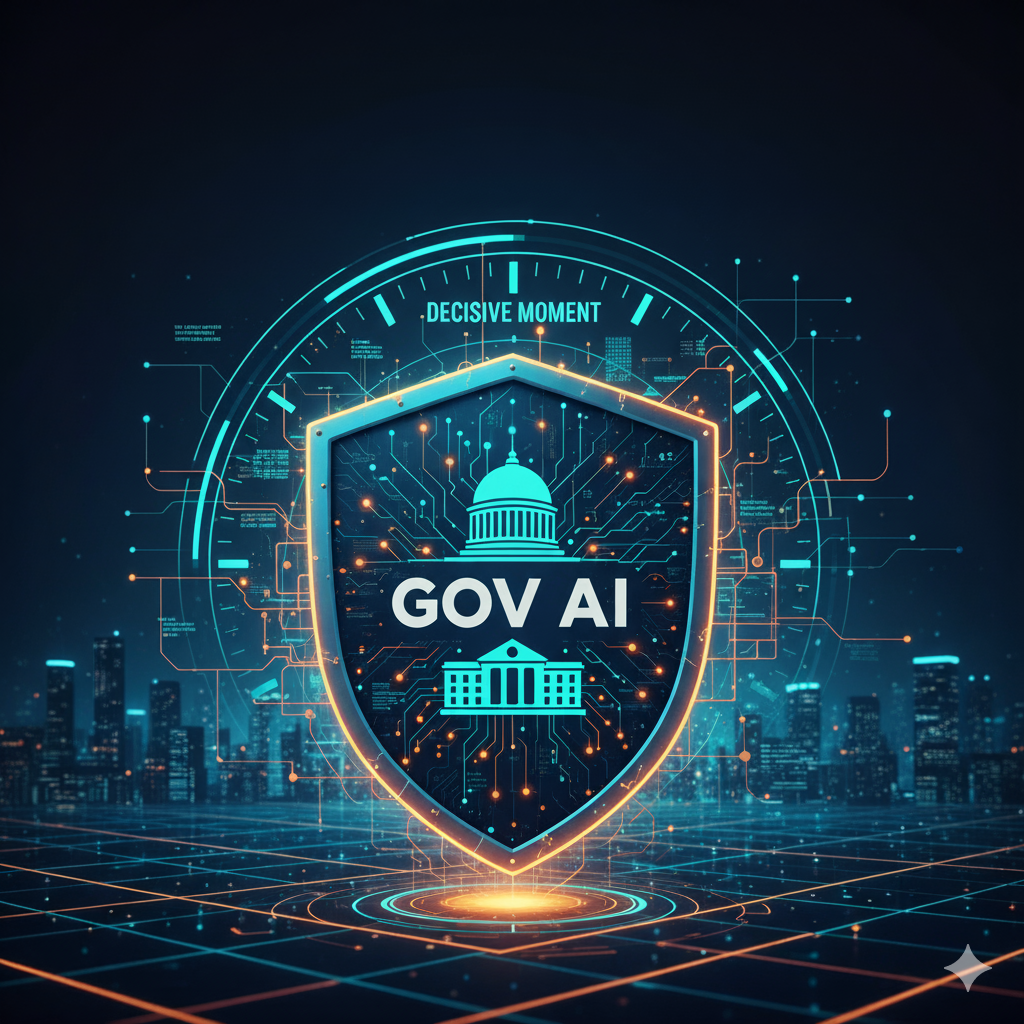
Agency executives should answer foundational questions: Have we identified high-impact use cases aligned with our mission rather than adopting AI for its own sake? What security posture matches our requirements—accepting cloud risks for agility or investing in on-premises control for sensitive work? How will we measure ROI and mission impact beyond anecdotal success stories?
Technology leaders need clarity on infrastructure readiness for AI agent integration, skills gaps requiring targeted hiring or training, and strategies ensuring vendor diversity while achieving integration. Balancing flexibility with avoiding excessive fragmentation demands thoughtful architecture and governance.
Policymakers must develop regulatory frameworks protecting citizens while enabling innovation, ensure equitable AI access across government levels avoiding digital divides, and establish national security safeguards for AI infrastructure without stifling commercial partnerships.
Contractors and integrators should evolve their value propositions for an AI-agent world where implementation complexity shifts from custom coding to integration, orchestration, and domain expertise. Partnerships positioning firms for long-term government AI work balance platform relationships against maintaining independence and multi-vendor capabilities.
The decisive moment is now. AI adoption is no longer optional for government competitiveness—it’s imperative for national security, citizen service, and economic prosperity. Success requires balancing speed with security, fostering public trust through transparency and accountability, and coordinating strategic partnerships, infrastructure investment, and workforce transformation as complementary pillars rather than competing priorities.
What role will your agency play in this transformation? Will you lead by deploying AI strategically across mission-critical functions, demonstrating how technology amplifies human capabilities while maintaining democratic accountability? Or will bureaucratic inertia, risk aversion, and fragmented decision-making leave you trailing as other nations and jurisdictions surge ahead? The digital domain has become the decisive battleground—and the window for establishing position is measured in months, not years. Share your insights, challenges, and strategies as we collectively navigate this pivotal transition toward AI-powered governance that serves citizens, strengthens institutions, and upholds fundamental rights in the digital age.
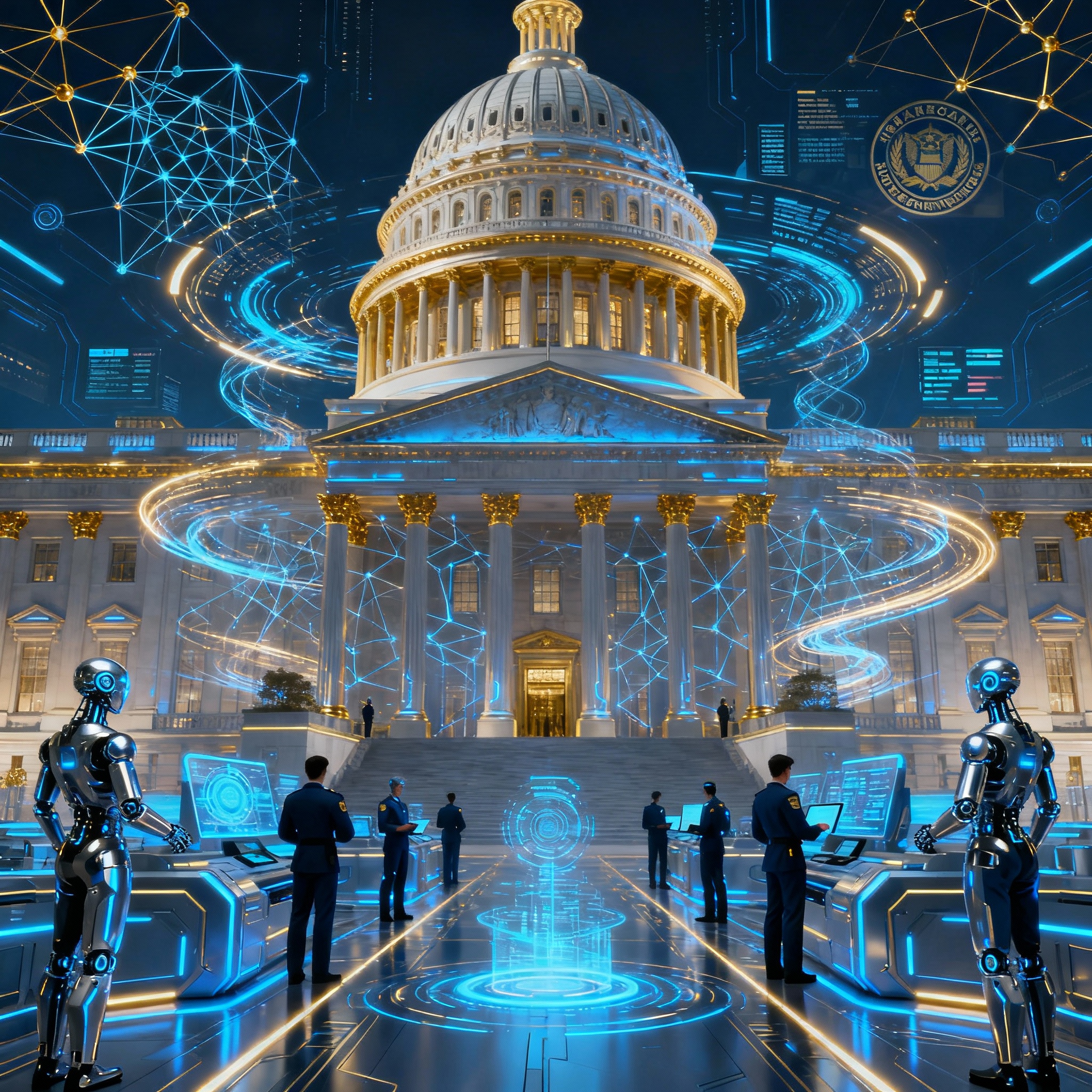

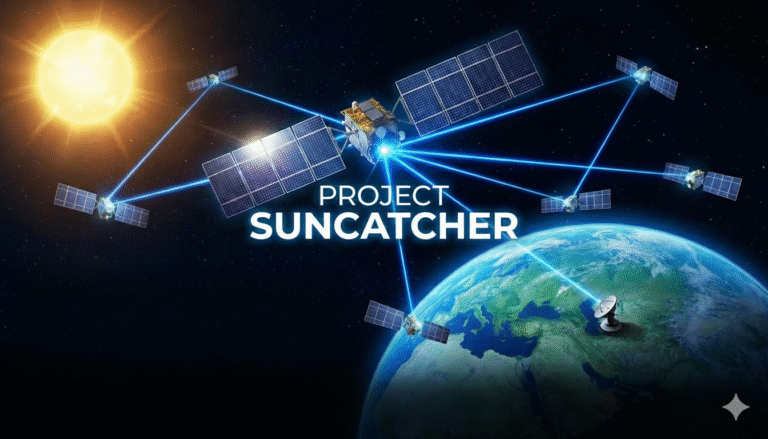
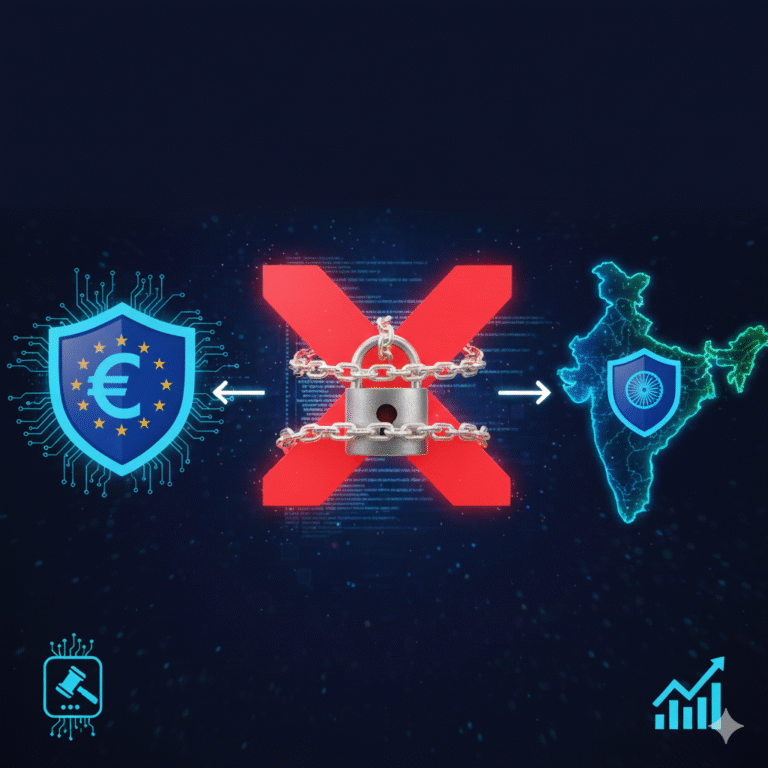



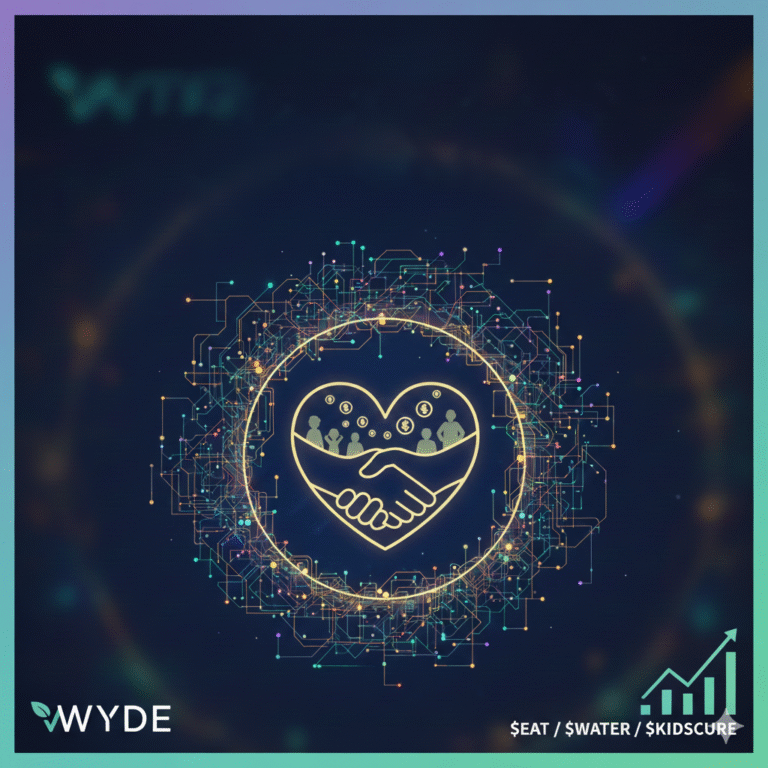

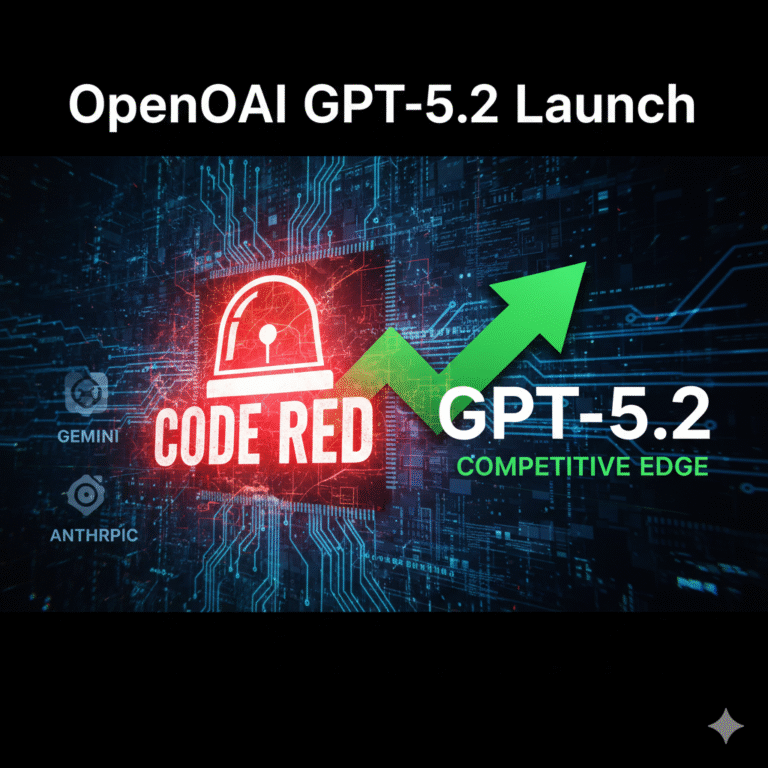
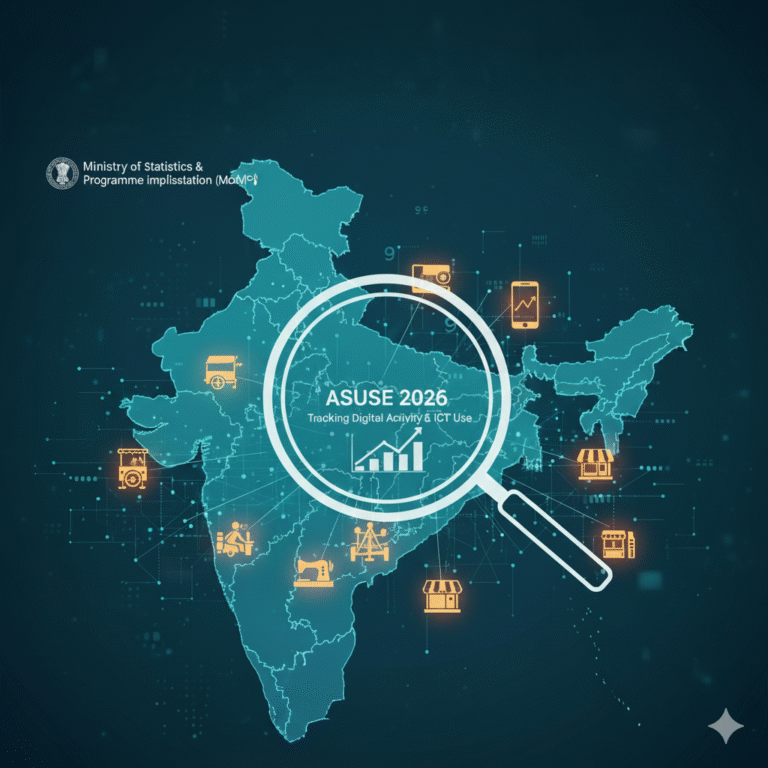
+ There are no comments
Add yours